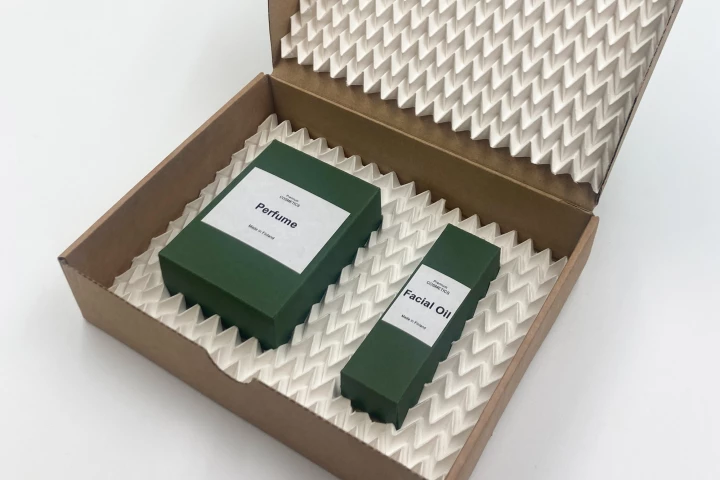Origami
-
Non-recyclable, non-biodegradable, petroleum-based EPS (expanded polystyrene) foam packaging is not eco-friendly stuff. There could soon be a greener and snazzier-looking alternative, however, in the form of origami-folded cardboard.
-
Tubular structures that fold flat for storage may not take up much room in that form, but they also tend not to be very strong when deployed. That isn't a problem with an experimental new type of tube, that's inspired by both origami and bamboo.
-
Sometimes a cyclist needs a big, old basket. Sometimes a big, old basket is the last thing they need. The new Allpacka One ensures they're happy in both cases, riding as a flat rack on regular commutes and fast-folding into a 30-L basket on demand.
-
Multirotor drones may get all the glory, but fully rotating "monocopters" are much more energy-efficient. A new one distinguishes itself further, as it can squeeze through narrow spaces or drop like a falcon by reducing its wingspan while in flight.
-
After years of releasing one origami kayak after another, Oru has really stepped out of its comfort zone and diversified. This time, the company puts its industrial-origami skills into a newly launched line of portable camping furniture.
-
Oru Kayak has long offered some of the market's most compact, conveniently portable watercraft. Now the company is expanding the appeal of its lineup by pairing its vessels with an equally compact, portable electric drive system.
-
Hard-sided pop-up pickup campers and toppers seem to be a trend of the early 2020s. Hardsider is deep at work on the sleekest version yet, pairing a military-grade truck rack with a removable pop-up sleeper roof, LED lighting and Starlink internet.
-
If you're trying to distribute environmental sensors over a wide area by dropping them from a drone, you don't want them all landing in the same place. With that fact in mind, University of Washington scientists have created origami "microfliers."
-
Levante upscales origami-inspired portable solar charging with systems that expand like wings to multiple times their packed size. With hundreds of watts of power, the units are an intriguing solution for RVing, sailing and off-grid homesteading.
-
Reaching far beyond cutesy paper sculptures, origami has underpinned some cutting-edge breakthroughs. Sego Innovations uses it to create the most packable solar charger around, with a panel that packs down to an eighth of its size in about a second.
-
At the same time it's been launching portable kayaks, Oru has been quietly working to apply its origami construction to other products. It's now introducing camp furniture that packs small and flat, quickly building into a multifunctional campsite.
-
Back in 2020 we first heard about the SUS1, a prototype folded-steel electric scooter made by Swedish startup Stilride. Well, the company has now announced full specs and pricing on the production version of the vehicle, called the Stilride 1.
Load More











